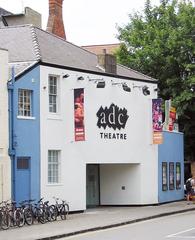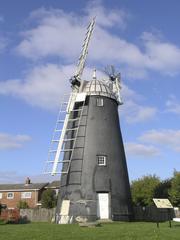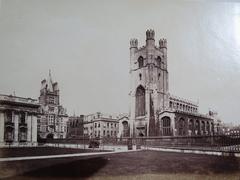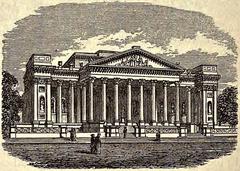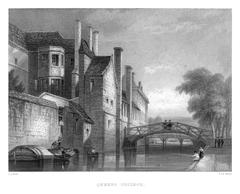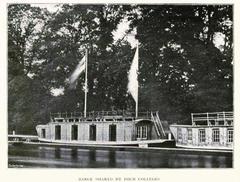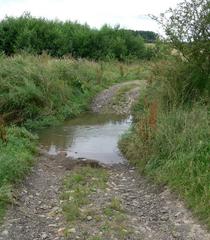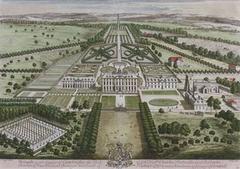Visiting East Pit in Cambridge: Tickets, Hours, and Tips
Date: 25/07/2024
Introduction
Located in Cherry Hinton, Cambridge, East Pit is a remarkable site that intertwines rich historical significance, geological marvels, and ecological diversity. This former chalk quarry has played a pivotal role in the construction of several iconic buildings in Cambridge, such as King’s College Chapel and Trinity College’s great gateway (Cambridge News). Beyond its historical importance, East Pit offers a unique ecological habitat that supports rare species of flora and fauna, making it an invaluable site for both historical and ecological studies. Managed by the Wildlife Trust for Bedfordshire, Cambridgeshire, and Northamptonshire, East Pit has been designated a Local Geological Site (LGS) and a Site of Special Scientific Interest (SSSI) due to its exceptional biological value (Cambridgeshire Geological Society). Whether you are a history enthusiast, a nature lover, or an eager photographer, East Pit promises a wealth of experiences that cater to diverse interests. This comprehensive guide aims to provide practical visitor information, delve into the site’s historical and ecological significance, and highlight nearby attractions to enhance your visit to East Pit.
Table of Contents
- Introduction
- Historical Background of East Pit
- Visitor Information
- Nearby Attractions
- FAQ
- Conclusion
Historical Background of East Pit, Cambridge
Early Quarrying Activities
East Pit, located in Cherry Hinton, Cambridge, has a rich history that dates back several centuries. The chalk quarries in Cherry Hinton, including East Pit, were significant sources of hard chalk, known as clunch, extensively used in constructing local buildings, including some prestigious colleges of the University of Cambridge. Quarrying activities in East Pit are believed to have started as early as Roman times (Cambridge News).
Medieval and Renaissance Periods
During the medieval period, chalk from East Pit was used in constructing several notable buildings in Cambridge. For instance, King’s College acquired a clunch pit at Cherry Hinton, likely East Pit, before 1452. The material from this pit probably helped build the earlier parts of King’s College Chapel (Cambridgeshire Geological Society). Other significant constructions utilizing chalk from East Pit include the great gateway at Trinity College and parts of Peterhouse in the late 15th century, as well as the chapel at Corpus Christi College in the 16th century (Cambridge News).
Industrial Significance
The industrial significance of East Pit continued well into the 19th and 20th centuries. Chalk and lime extracted from the pit were transported to the Coldham’s Lane area, where cement works operated from around 1895 to 1956. This period marked a significant phase in the industrial history of Cherry Hinton and surrounding areas (Cambridgeshire Geological Society).
Archaeological Discoveries
East Pit is significant not only for its geological and industrial history but also for its archaeological importance. In 2009, archaeologists unearthed human remains and Roman artifacts in an Iron Age ditch at the site. These findings provide valuable insights into ancient human activities and settlements in the area (Cambridge News).
Designation as a Local Geological Site
Recognizing its historical, scientific, and educational value, East Pit was designated a Local Geological Site (LGS) in February 2016. This designation underscores the importance of preserving the site for future generations and promoting its geological heritage (Cambridgeshire Geological Society).
Geological Significance
East Pit offers a unique opportunity to observe extensive and accessible views of a sedimentary rock sequence. The chalk deposits at the site represent various depositional environments and different rock units, with an average deposition rate calculated at 1 cm per 1000 years (Cambridgeshire Geological Society).
Modern-Day Conservation Efforts
Today, East Pit is part of the Cherry Hinton Chalk Pits nature reserve, owned and managed by the Wildlife Trust for Bedfordshire, Cambridgeshire, and Northamptonshire. The site has been designated a Site of Special Scientific Interest (SSSI) for its biological value, particularly its chalk grassland flora, which includes rare species such as the moon carrot (Wildlife Trust BCN).
Visitor Information
Visiting Hours and Tickets
East Pit is open to the public during daylight hours. Admission is free; however, donations to the Wildlife Trust are encouraged to support conservation efforts.
Travel Tips
East Pit is located in Cherry Hinton, Cambridge, and can be accessed via public transportation or car. Parking is available near the site, but visitors are encouraged to use sustainable transport options where possible.
Special Events and Guided Tours
The Wildlife Trust occasionally organizes guided tours and special events at East Pit. Check their official website for the latest updates.
Photographic Spots
The unique landscape of East Pit, with its steep chalk cliffs and diverse flora and fauna, provides excellent photographic opportunities. Key spots include the viewing areas along the network of paths.
Nearby Attractions
While visiting East Pit, consider exploring other nearby attractions such as the Cambridge University Botanic Garden, the Fitzwilliam Museum, and the historic colleges of the University of Cambridge.
FAQ
Q: What are the visiting hours for East Pit?
A: East Pit is open to the public during daylight hours.
Q: Is there an admission fee to visit East Pit?
A: Admission is free, but donations to the Wildlife Trust are encouraged.
Q: Are guided tours available?
A: Yes, the Wildlife Trust occasionally organizes guided tours. Check their official website for updates.
Q: Can I take photos at East Pit?
A: Yes, East Pit offers excellent photographic opportunities, especially around the chalk cliffs and diverse flora.
Conclusion
East Pit in Cherry Hinton, Cambridge, stands as a testament to the region’s rich historical and ecological heritage. From its early use during Roman times to its significant contributions to the construction of Cambridge’s iconic buildings, East Pit has been an integral part of the area’s cultural and industrial narrative. Today, the site is a sanctuary for rare flora and fauna, offering a unique blend of historical and natural beauty that captivates visitors and researchers alike. Managed meticulously by the Wildlife Trust for Bedfordshire, Cambridgeshire, and Northamptonshire, East Pit continues to thrive as a site of scientific and educational importance (Cambridgeshire Geological Society). By visiting East Pit, you are not only exploring a piece of history but also contributing to the ongoing conservation efforts that ensure this remarkable site remains a haven for future generations. Stay updated on events and news by following the Wildlife Trust’s social media or visiting their official website.
References
- Cambridge News. (2022). Cherry Hinton Chalk Pit Walk. https://www.cambridge-news.co.uk/news/local-news/cherry-hinton-chalk-pit-walk-19646522
- Cambridgeshire Geological Society. (n.d.). Cherry Hinton. http://www.cambsgeology.org/cherryhinton
- Wildlife Trust BCN. (n.d.). Cherry Hinton Chalk Pits. https://www.wildlifebcn.org/nature-reserves/cherry-hinton-chalk-pits
